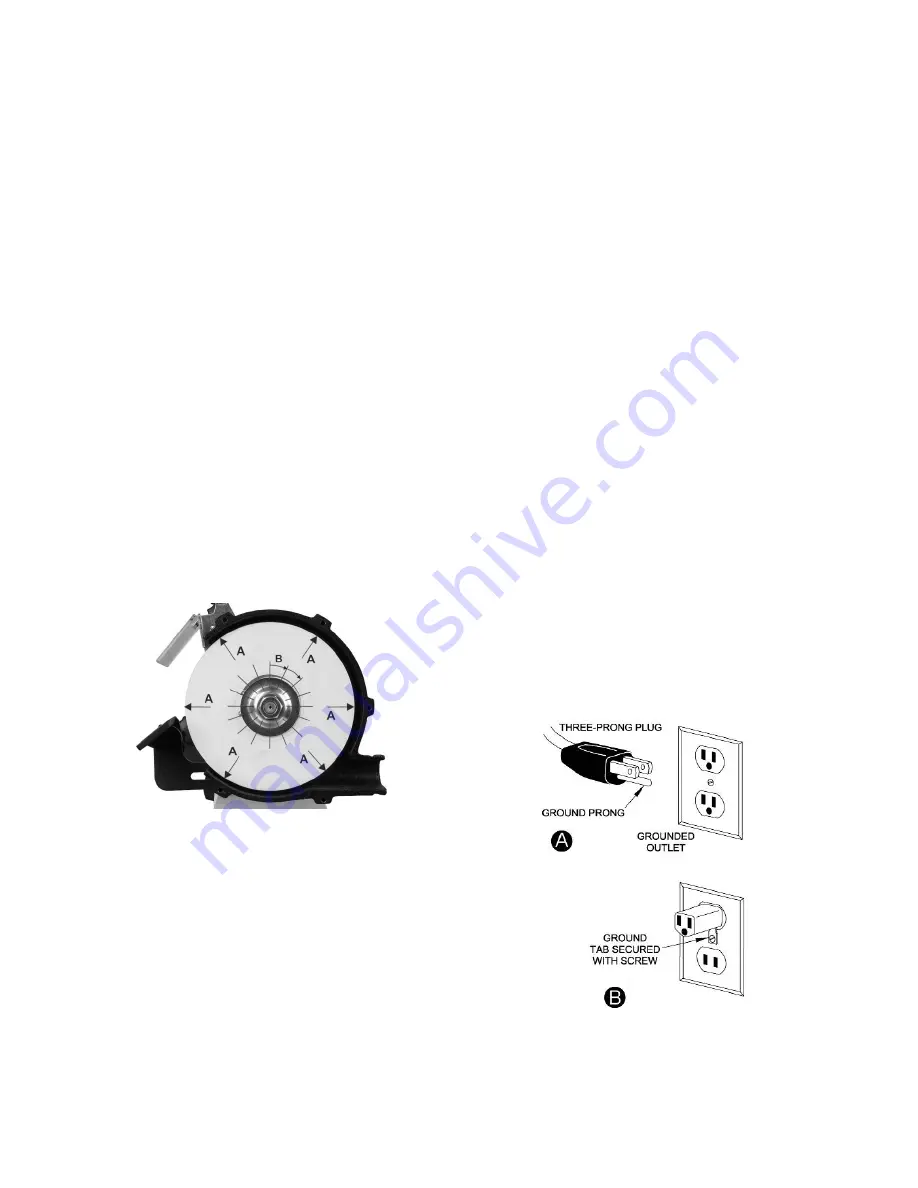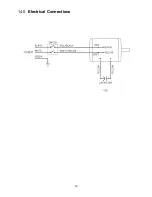
10
6.13
Wheel balancing
With the grinder
unplugged from the power
source
, and arbor nuts snugged down, rotate
wheels by hand and observe their motion.
A grinding wheel has proper balance when:
1. The wheel’s outside face spins true and round;
that is, its circumference rotates concentric to
the arbor.
2. There is no side-to-side wobble.
The operator who takes time to patiently perform
needed adjustments will be rewarded by wheels
running true, and accurate grinding of work pieces.
6.13.1
Adjusting concentricity
If the outside face is not rotating concentric to
arbor, try shifting the wheel closer to arbor
centerline before tightening the nut. See A, Figure
6.
Another method of achieving concentricity is the
use of a wheel dresser (not provided). “Dressing” is
the removal of the current layer of abrasive to
expose a fresh surface. A wheel dresser is also
used to “true” a wheel; that is, to make the grinding
surface parallel to the tool rest, so the entire wheel
presents an even surface to the work piece. Proper
use of a wheel dresser will eliminate high spots
and result in concentric rotation about the arbor, as
well as minimize vibration. (Always follow the
wheel dresser manufacturer’s instructions.)
Figure 6: wheel balancing
6.13.2
Correcting side-to-side wobble
1. Loosen nut and rotate the outer flange a little.
Snug the nut and spin the wheel by hand to
check.
2. If wobble still exists, continue repeating step 1,
rotating outer flange incrementally in the same
direction. See B, Figure 6. Make sure to keep
the wheel in the same position each time.
3. If complete rotation of outer flange has proved
ineffective, remove nut, outer flange, and
wheel (keep wheel in same orientation by
placing a pencil mark on it somewhere for
reference). Then rotate inner flange about 90°
and repeat the above steps for the outer
flange.
4.
Continue this combination of flange
movements until the wobble is eliminated.
If required, a shim made of thick paper or card
stock may be placed between flange and wheel
side.
NOTE: Very slight wobble may still exist at spin-up
and spin-down, but will not affect normal speed
operation.
If excessive wobble still exists after performing the
above remedies, consult
section 12.0
for further
possibilities. When troubleshooting, keep in mind
these possible sources of imbalance:
1. Wheel not concentric.
2. Wheel wobbles side-to-side.
3. Wheel arbor bushing has play in it.
4. Wheel is poor quality.
5. Flanges are warped.
7.0
Electrical connections
The JWBG-8 Bench Grinder is rated at 115 volt
power. The grinder is supplied with a plug
designed for use on a circuit with a 110-120V
grounded outlet
that looks like the one pictured in
A, Figure 7.
Before connecting to power source, be sure switch
is in
off
position.
It is recommended the grinder be connected to a
15 amp circuit with a 15 amp circuit breaker or
time-delay fuse marked “D”.
Local codes take
precedence over recommendations.
Figure 7: plug and receptacle






































